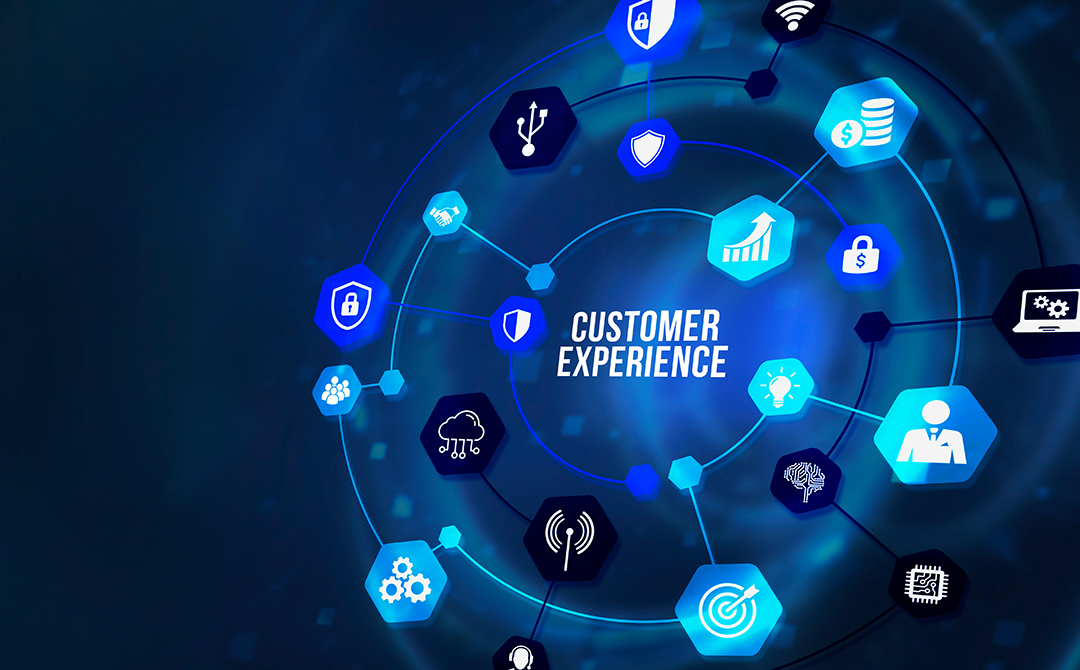
Customer experience is not just a buzzword; it is key to the success and longevity of any business. Today, customers have the option to choose from a large number of brands. Therefore, the experience you deliver to customers at every interaction truly sets you apart.
Consider this:
- 53 percent of consumers indicate that a company's experience matters as much as its products or services.
- 49 percent state that a company's relationship with its customer base is as significant as its offerings (Source: Forbes).
These statistics reflect the immense value customers place in their experience while interacting with a brand.
In this article, we will explain customer experience management (CEM), why it is a game-changer, and what steps you can take to ensure seamless CEM in your organization.
What is Customer Experience Management (CXM)?
Customer Experience Management refers to the process of designing, monitoring, and optimizing every interaction a customer has with a brand to create a seamless, engaging, and delightful journey. It involves the usage of technology, data, and empathy to build strong, lasting relationships with customers.
The concept of managing customer experiences gained prominence in the late 1990s. In 1998, B. Joseph Pine II and James H. Gilmore introduced the idea of the Experience Economy, emphasizing that businesses should orchestrate memorable events for their customers, with the experience itself becoming the product.
Their work highlighted the importance of delivering engaging and memorable customer experiences for retention and referrals (Source: Harvard Business Review).
Today, consumers do not look for brands that just “do the job.” They come back for those who make their lives easier and better. A well-thought-out and executed customer experience management process helps you make a customer feel valued.
Consider Spotify. Every year, the company releases "Wrapped," which becomes the highlight for many people. The brand feels personalized, evokes a sense of nostalgia, and boasts a high level of engagement. Why? Spotify transforms your listening data into a story about you. It is fun and shareable, making you feel as if Spotify understands you personally (Source: Time Magazine).
Why is Customer Experience Management Important?
In pursuing growth, businesses often focus on acquiring new customers, assuming it is the only path to expansion. It is easy to see the appeal of chasing fresh revenue streams. However, this approach overlooks the immense potential of nurturing and retaining your existing customer base.
Several companies know this potential and ensure they do not lose their existing customer base. For instance, Amazon enhances the value for its existing customers by bundling free shipping, video subscriptions, and exclusive deals into a single package—Amazon Prime.
The results? Prime members spend $1,400 a year compared to $600 for non-members. Furthermore, Amazon Prime works on a subscription model tied to different services (e-commerce and OTT). This makes it difficult for a customer to cancel their membership. It is not surprising that the churn rate of Amazon Prime is 8 percent, one of the lowest in the OTT segment (Source: Parks Associates).
Leading companies like Amazon, IKEA, Tesla, Apple, and Disney World are known for creating memorable customer experiences. However, a majority of companies still face significant challenges in this aspect. For instance, Forrester’s 2024 US Customer Experience Index found,
- CX quality has declined for the third consecutive year, with 39 percent of brands and 10 industry averages showing reduced CX performance. Effectiveness, ease, and emotion—the three pillars of CX quality—have all dropped in performance. The average efficacy of experiences now stands at 64 percent, while that of ease of experiences is 66 percent.
- Customer-obsessed organizations—prioritizing customer needs and satisfaction in every business decision—represent just 3 percent of all companies. These organizations report 41 percent faster revenue growth, 49 percent faster profit growth, and 51 percent better customer retention than non-customer-obsessed firms (Source: Forrester).
Customer experience management ensures your existing customers feel valued and loyal to your brand. It also enhances your reputation in the market. Remember, customers might quickly browse the positive testimonials and awards on your website, but more often than not, they will seek feedback from their peers and colleagues to gauge their potential experience with your company.
Customers use review sites such as G2, Clutch, and TrustPilot in the B2B space and social media sites such as X and Facebook in the B2C space to share their experiences interacting with a brand. Poor customer experiences often gain significant traction, making it challenging for brands to create a positive perception in consumers' minds.
Most organizations recognize the importance of robust customer experience management; however, the real challenge lies in execution, as delivering a superior experience at every touchpoint requires a seamless blend of customer experience management technology, empathy, and operational excellence.
The next section will look at key customer experience management challenges in detail.
Challenges of Customer Experience Management
Embracing customer experience management is not a matter of awareness but one of execution.
Whether it is a lack of coordination between customer-facing departments or a shortage of optimal technology solutions, several factors create challenges in implementing an effective customer experience management process. These include:
- Knowing What Customers Want: Customers are unpredictable. Their preferences change faster than you can say "personalization." The data is available, but it is messy, fragmented, and sitting in silos.
You would just be guessing if you do not leverage tools such as real-time analytics or build detailed customer personas. And guessing is not a strategy.
- Customer-facing Teams Operating in Silos: Customers do not care if your sales, marketing, and support teams are separate departments. They see you as one brand. Customer experience falls apart if teams are not on the same page.
- Proving the Impact of ROI: Quantifying CX in dollars remains a significant challenge. Metrics such as Net Promoter Score (NPS), churn rate, and resolution speed exist, but connecting them directly to financial outcomes can be elusive.
Justifying the investment in customer experience management initiatives can often be challenging without a clear link between strong CX and repeat business.
- Poorly implemented Tech: Poorly implemented chatbots and automation can lead to frustrated customers and eroded trust.
Customers often encounter chatbots that struggle to understand the context or provide accurate answers, requiring them to repeat their queries or escalate to human support. This leads to unnecessary friction and frustration.
Organizations addressing the abovementioned challenges benefit from increased loyalty and low churn rates. Let us now look at some key advantages of customer experience management.
Customer Experience Management Benefits
Key advantages of customer experience management include:
Increased Customer Satisfaction and Loyalty
Tailoring experiences to individual customers' needs and wants can increase customer satisfaction. Happy customers are more likely to be repeat buyers and brand advocates, enabling you to achieve more retention and less churn.
For instance, selling to existing customers has a 60 percent to 70 percent success rate compared to just 5 percent to 20 percent for new customers. Additionally, retaining a customer costs far less—5-25 times cheaper—and even a 5 percent increase in retention can boost profits by a staggering 75 percent (Source: Infosys BPM).
Better Brand Perception
Positive customer experiences build a stronger brand. Customers who have positive experiences with a business are more likely to share them online and offline, thus boosting the brand.
According to a study of over 100 retail banks in Europe and the U.S., misalignment between a brand’s promise and delivery resulted in low customer preference scores. However, aligning customer experiences with brand promises enhanced brand preference, making retaining existing customers and attracting new ones much easier (Source: Kantar).
Higher Revenue
Happy and satisfied customers are open to buying more products or services. On the other hand, acquiring new customers is often more expensive than retaining existing ones. Companies who can execute their customer experience plans effectively across each touchpoint experience a considerable increase in their revenue.
A McKinsey survey of 25,000 customers found that companies prioritizing customer delight achieve a significant edge over competitors, excelling in total return to shareholders (Source: McKinsey).
Outlining customer experience management as a key part of your business operations is only the starting point; ensuring it is followed across the organization requires a sustained, focused approach.
Let us now look at some examples of organizations known for their exceptional customer experience management.
Customer Experience Management Examples
Several renowned companies provide a superior customer experience. A robust customer experience management system is not an awareness issue; most organizations understand its value. The challenge lies in delivering it consistently, year after year. However, some companies have been able to address these challenges and excel in customer experience management. Let’s take a look at some examples.
Apple’s word-of-mouth drives a significant percentage of its iPhone sales. Its superior customer experience complements the company’s exceptional products. A person walking into an Apple store is not merely looking out for electronic devices but a customer seeking an entire experience.
Apple’s Genius Bars are not just helpdesks but experience centers. Every detail is planned, from the moment you book your appointment through the web to the time you receive an email about the experience. It is not just about offering a service; it is about putting in the required amount of work for the service offered (Source: Inc).
Disney World is another example of excellent customer experience. An immersive experience commences the moment you walk in and get the MagicBand. The MagicBands are your hotel keys, park tickets, payments, etc. They help you focus more on the adventures than worrying about lost items.
Disney World also uses your data to personalize your experiences. It observes what rides you like, where you eat, and how you traverse through its park. The company then leverages this information to provide you with an excellent experience.
Disney understands that kids do not like to wait their turn. So, it sends a character to entertain them. Furthermore, you can expect presents throughout your birthday. Disney does not just control experiences; it creates memories (Source: UX Mag).
Amazon, one of the largest e-commerce companies, also diligently focuses on customer experiences. Its customer experience management approach is based on eliminating friction. One-click same-day delivery and no-hassle returns are executed keeping in mind customer convenience.
Amazon's strong focus on customer experience has enabled it to consistently achieve American Customer Satisfaction Index (ACSI) scores above 80 in 2024. ACSI scores range from 0 to 100, with 100 representing the highest level of customer satisfaction (Source: Statista).
Several companies excel at customer experience management. A key aspect of these companies is designing everything around the customer's comfort and then creating tools and tech to ensure a memorable experience across platforms.
Best Tips to Manage Customer Experience
Managing customer experience is an art and science. There is no universal recipe for success; however, there are proven guidelines that can make a significant difference. The key lies in understanding what separates good practices—consistency, personalization, and a deep empathy for customer needs—from average ones.
Whether streamlining touchpoints, actively incorporating feedback, or leveraging data and AI solutions to anticipate customer needs, the right strategies can transform customer interactions into opportunities for loyalty and advocacy.
Let us explore some tips to elevate your customer experience game.
Don’t Just Solve Problems – Anticipate Them
Crafting winning strategies for customer experience management is about anticipating customer needs and thinking a few steps ahead.
Starbucks understands that people hate waiting in line for their coffee. So, it built an app that allows them to skip the queue. The app remembers your favorite drinks, suggests new ones, and even knows your go-to store. This is not just solving a problem; it is owning the experience. Companies must be proactive and not reactive.
Make Self-service Easy
People will solve their problems if you make it easy for them. FAQs, knowledge bases, and online portals are not just nice-to-haves; they are the MVPs of modern customer experience management.
Customers do not want to call a support line and wait on hold; they want to click a button, find the answer, and move on. Give them that, and you are already one step ahead of your competitors who rely on legacy customer support methods.
Train Your Team to Treat Customers with Empathy
Your team is the face of your brand; it needs to uphold your values. Whenever a customer complains on social media, they more often than not tag the brand and not the individual who did not meet their expectations.
Companies often understand the importance of this aspect. Zappos, a U.S.-based shoe and clothing retailer, empowers its representatives to take the time to talk to customers and solve their problems (no matter how long it takes). A Zappos customer service rep holds the record for the longest call (nearly 11 hours) with a customer (Source: Business Insider).
Personalization = Loyalty
Generic interactions are dead. Customers expect you to know what they like, what they have bought before, and how you can make their lives easier.
Consider Spotify. It is not just a music app; it is your personal DJ. Every playlist and recommendation screams, “We get you.” That is the level you need to be at.
Make it About the Customer, Not You
Companies often make the mistake of focusing on the features of their products and services rather than truly understanding their customers' pain points. “What do our customers really need?” should be the starting point for developing an effective customer management strategy.
Collect Feedback and Use It
Most companies have a feedback mechanism in place. They attempt to understand customer experience through surveys or feedback forms. However, collecting data is one thing. Using it to derive insights and improve your services requires commitment.
If you collect customer feedback, do not let it sit idle in a data repository. Use it actively to create a win-win—customers feel valued and heard while you gain actionable insights to drive meaningful improvements.
Reduce Friction at All Touchpoints with Tech
Friction is the killer of customer experience management. Long checkout processes, clunky websites, and confusing returns policies make customers dissatisfied. Streamline every step.
Use the latest data and AI solutions to handle routine tasks, so your team can focus on high-value interactions. Technology should make reaching a human when needed easier for your customers.
Create a Culture That Cares
Customer experience management is not just a strategy; it is a mindset. If your entire team—from the CEO to the intern—lives and breathes “put the customer first,” it will show.
People remember and cherish small things. For instance, Chewy, a pet supply company, sends sympathy flowers when a customer’s pet dies. Starbucks puts your name on your cup. These small gestures may not cost much, but their impact is priceless.
Each company has a unique culture; therefore, a one-size-fits-all approach cannot be followed. However, keeping customer experience at the center of all initiatives is key to ensuring longevity and consistency.
Improving Customer Management with Tredence
Successful customer experience management combines technology, empathy, and data-driven insights. Companies that embrace these principles do not just meet expectations; they set new standards, ensuring relevance and resilience in a competitive market.
Advancements in data science, machine learning, and artificial intelligence have made data a powerful driver of innovation and opportunity, unlocking possibilities like never before. These disciplines are catalysts for a future defined by smarter decisions, personalized experiences, and sustainable solutions.
Organizations adopting these technologies are gaining a crucial first-mover advantage. However, thorough planning and execution are required to incorporate these innovations successfully.
Enterprises strive to move beyond the AI hype and harness its potential to transform their business operations. Tredence helps such companies achieve their data objectives.
Tredence combines deep data engineering, data science, and machine learning expertise with extensive domain experience to help organizations modernize their data foundations and transform enterprise data into actionable insights through AI and ML.
Its portfolio includes over 140 AI/ML accelerators designed to address even the most complex data science and machine learning challenges. These accelerators empower organizations to unlock unprecedented value from their data. Using Tredence accelerators, clients can achieve meaningful results in weeks, not months.
Tredence’s approach delivers tangible results, supported by an industry-leading 94 percent Net Promoter Score across 1,000+ project engagements. Contact Tredence today to transform your organization with advanced data science and machine learning solutions.
FAQs
What is the meaning of customer experience management?
Customer Experience Management, also known as customer experience management, is a practice of strategically managing and optimizing all interactions a customer has with a brand. Customer experience management aims to ensure customers have a great experience that fosters trust and loyalty.
What are some customer experience management examples?
Some companies are well-known for creating a superior customer management experience through technology and human empathy. Notable examples include Amazon, IKEA, Disney, and Starbucks.
What are the key challenges with customer experience management?
Key challenges in customer experience management include inadequate technology or poor implementation of existing solutions, customer-facing departments operating in silos, and a general indifference toward this crucial aspect of the business.

AUTHOR - FOLLOW
Editorial Team
Tredence




